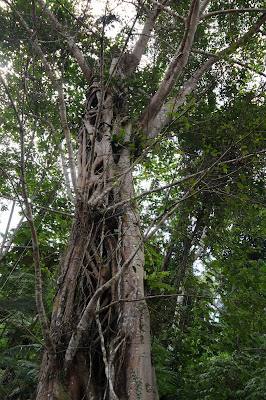
The Ficus (figs) is a key-stone species. One that a rainforest depends on to survive as a rainforest. In other words, without it, you can rename the rainforest as something else. As a form tree, it is quite unique and in many ways there is no other tree quite like it, in terms of uniqueness. Well, you may argue that uniqueness in a species is relative. I may find the human kind to be unique while others may not.
There are over 750 species of figs worldwide. And amazingly, almost each specie of figs depend on a particular species of fig wasps to pollinate it. Well, some figs may depend on more than one type of fig wasp, but generally speaking that mutual dependency between figs and the specially evolved fig wasps is more exclusive than any other kind of tree species in the world as we know it.
The wasps would pollinate the figs and while doing so (in the natural world there is no free lunch too) , the figs would provide food and shelter for the wasps to lay their eggs and for the eventual young wasps to be fed (on the seeds of the figs).
Later, the figs would then depend on other animals of the jungle, most notably the birds and the bats, to transport the pollinated seeds to another location to be transplanted and later grow into another fig tree.
Because the figs do fruit a few times a year (and at different times of the year for different species) and there are many fig trees in the forest, it is an important source of food for the feathered kind and our fellow flying mammals. Without the figs, the birds, bats, monkeys and other tree-climbing animals would not have a constant and assured source of food.
That is why the figs are so important.
You can read more about the incredible story of the figs, how it has evolved and what it means to us in Colin Tudge's wonderful book entitled "The Secret Life of Trees". I have unashamedly but with utmost respect and humility borrowed from his book for this short entry.